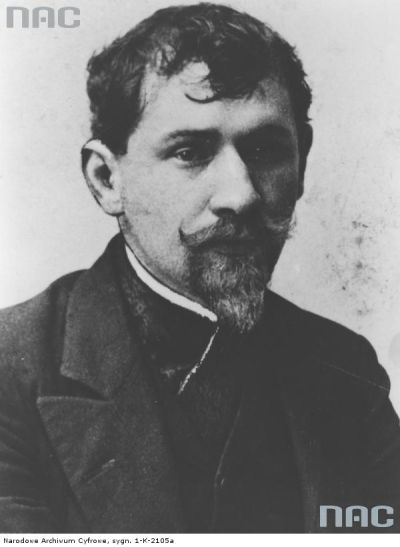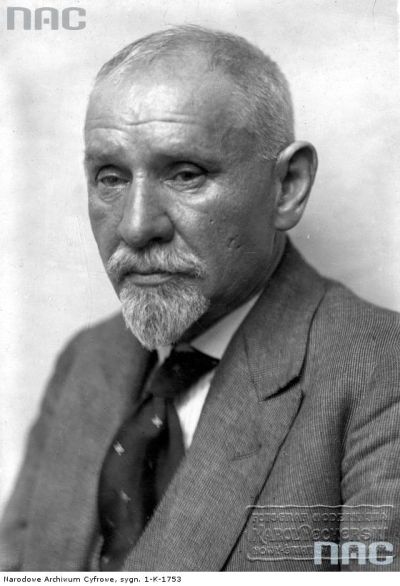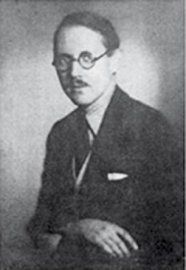Stanisław Przybyszewski (1868–1927)

Stanisław Przybyszewski came to Berlin in 1889 after completing his school studies at the German grammar school in Wągrowice in the region of Kujawy, and remained there for the next six years. In 1889 he began to study architecture, but after only one year he switched to medicine. However he failed to complete his studies because he was arrested on the grounds of his contacts with the workers’ movement and expelled from the university in 1893. He was presumably not interested in the conventional life of an architecture or medicine student anyway since he was intent on leading a bohemian style life in Berlin. In the early 1990s “Stachu” as he was known, was surrounded by artists and writers August Strindberg, Ola Hansson, Paul Scheerbart, Carl Ludwig Schleich, Otto Erich Hartleben, Franz Ewers, Julius Bierbaum, Franz Servaes, Julius Hart and Edvard Munch. Influenced by Przybyszewski’s “Totenmesse” Munch painted his world-famous “Scream” (1903) and presented it to Przybyszewski as a gift.
Przybyszewski was a close friend of the German writer Richard Dehmel. The group around Przybyszewski mostly met in a pub called “The Black Boar” (“Das schwarze Ferkel”) in Neue Wilhelmstraße near Unter den Linden). This was to become an important meeting point for their all-night symposia. Despite, or maybe because of his intensive bohemian lifestyle Stanisław Przybyszewskl’s time in Berlin was very fruitful. Here he wrote works like “Totenmesse”, “Vigilien” and “De profundis”, as well as working as an editor at the Berlin Polish-language socialist weekly “Gazeta Robotnicza” (“Workers Paper”). He was the co-founder of the art and literature journal “PAN”, the most important mouthpiece for “Jugendstil” in Germany, and also published articles in a satirical newspaper called “Die Fackel” (owned an edited by Karl Kraus) and in the “Freie Bühne”, a literary journal published by S. Fischer Verlag.
Between 1894 and 1898 Stanislaw Przybyszewski moved back and forth between Berlin and Kongsvinger, the Norwegian home of his wife Dagny Juel. It was not until 1898 that he moved to Kraków where he became the editor of the journal “Życie” (Life). Warsaw, Thorn and Munich were his next stopping points. At the end of the First World War he lived for a short time in Prague, before returning to Poland for good in 1919. Here he committed himself to working for the reconstruction of the Polish state and in 1924 he moved to Warsaw where he worked in the Civil Office of the President of the Republic. In recognition of his commitment to the young Polish State he was awarded the Officer’s Cross in 1925 and the Commander’s Cross of the “Polonia Restituta”. In 1927 he returned to Kujawy, the region of his birth, where he died in the same year on the Jaronty estate near Inowrocław at the age of 59.
Biographical dates:
Born on 7 May 1868 in Łojewo (Kujawy, district of Inowrocław)
1881–1884 / Grammar school studies in Thorn
1884–1889 / Student at the German grammar school in Wągrowice
1889 / Student of architecture in Berlin (not completed)
1890–1893 / Student of medicine in Berlin (not completed)
1892 / Editor at “Gazeta Robotnicza” in Berlin
1893 / Marriage to the Norwegian writer Dagny Juel
1894–1898 / Homes in Berlin and Norway
1898 / Editor of the journal “Życie” in Kraków
1905 / Moves to Thorn
1905 / Marries Jadwiga Kasprowicz
1906 / Moves to Munich
1919 / Returns to Poland
1919 / Civil servant and translator in Poznan
1920 / Civil servant and translator in Danzig
1924 / Moves to Warsaw
1927 / Returns to Kujawy
Stanislaw Przybyszewski dies on 23 November 1927 in Jaronty (Kujawy)
Bibliography:
Short stories
- “Totenmesse” (Fontane: Berlin, 1893)
- “Vigilien” (Neue deutsche Rundschau / Frei Bühne vol. 5, 1894)
- “De profundis” (H. Storm: Berlin, 1895)
- “Epipsychidion” (Fontane: Berlin, 1900)
- “Androgyne” (Fontane: Berlin, 1906)
- “Der Schrei” (G. Müller, München, 1918)
Novels
- “Unterwegs” (Fontane: Berlin, 1895)
- “Im Malstrom” (H. Storm: Berlin,1895)
- “Ueber Bord” (H. Stom: Berlin, 1896)
- “Satans Kinder” (Langen: Paris, Leipzig, München, 1897)
- “Erdensöhne” (Fontane: Berlin 1905)
Dramas
- “Totentanz der Liebe” (Fontane: Berlin 1902)
- “Schnee” (Marchlewski: München 1903)
- “Gelübde” (Etzold: München 1906)
Essays
- “Zur Psychologie des Individuums” (Fontane: Berlin 1892)
- 1. “Chopin und Nietzsche” 1892
- 2. “Ola Hansson” 1892
- “Die Gnosis des Bösen. Entstehung und Kult des Hexensabbats, des Satanismus und der Schwarzen Messe (Esoterik und Schwärmerei; Bd. 1)”, Zerling Verlag, Berlin 1984, (früherer Titel: Die Synagoge Satans).
“Von Polens Seele. Ein Versuch (Schriften zum Verständnis der Völker)”, Diederichs, Jena 1917.
Adam Gusowski, June 2014




